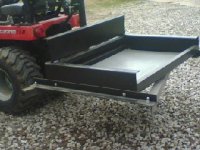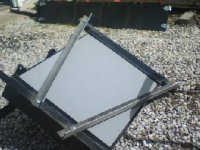shadogang
New member
New guy here, this is my first tractor so I will be asking questions as I go.
First thing, lots of great info here. have been reading thru lots of threads.
1. what RPM does everyone operate when running FEL?
I did find out that I will be needing a ballast box of some sorts soon. put 4 hours in the seat moving 12 yards of 3/4 gravel for a pool project and got alittle, light a couple of times. searched thru and probably will build something in the near future. So, do they make a top link hitch or is everyone make there own?
Was thinking about filling tires, where is a good place to find material for filling?
Thanx,
I am sure I will come up with more questions as the projects start rolling in.
Shadogang
First thing, lots of great info here. have been reading thru lots of threads.
1. what RPM does everyone operate when running FEL?
I did find out that I will be needing a ballast box of some sorts soon. put 4 hours in the seat moving 12 yards of 3/4 gravel for a pool project and got alittle, light a couple of times. searched thru and probably will build something in the near future. So, do they make a top link hitch or is everyone make there own?
Was thinking about filling tires, where is a good place to find material for filling?
Thanx,
I am sure I will come up with more questions as the projects start rolling in.
Shadogang

